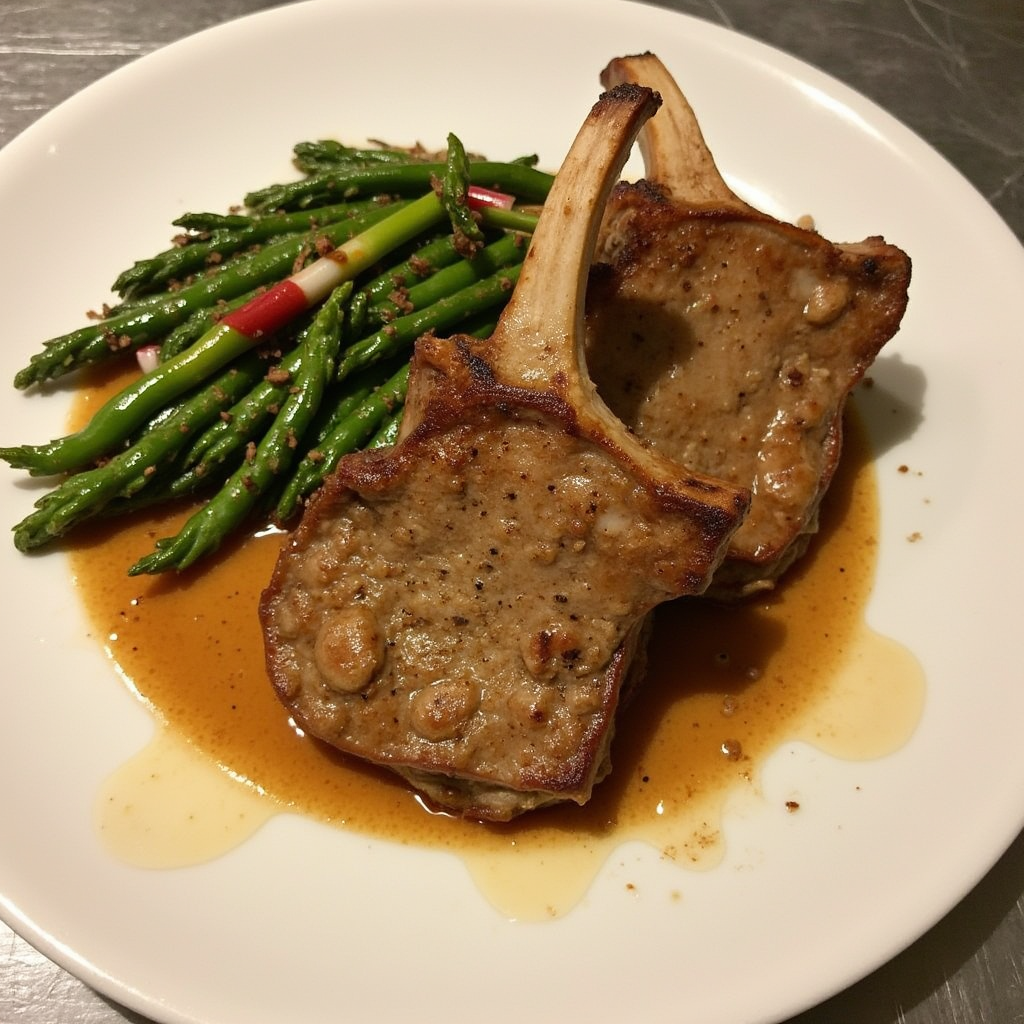Veal meat, known for its delicate texture and refined flavor, has long been a symbol of culinary excellence. Whether you’re a home chef experimenting with gourmet recipes or a conscientious consumer exploring sustainable meat options, veal offers a unique combination of versatility and sophistication. This guide delves into the world of veal, covering its nutritional value, culinary uses, and ethical considerations.
Understanding Veal Meat
Veal is the meat of young calves, typically under one year of age. Its tenderness and mild flavor make it a favorite in fine dining and home kitchens alike. The meat is pale pink in color, with a fine texture that sets it apart from beef. Veal’s history is deeply rooted in European culinary traditions, particularly in Italian, French, and Austrian cuisines, where it is used in iconic dishes like Wiener Schnitzel and Osso Buco. Over time, veal has gained global popularity due to its adaptability and ability to absorb flavors from herbs, spices, and sauces.
Nutritional Value of Veal
Veal is not only prized for its taste but also for its nutritional profile. It is a rich source of high-quality protein, essential for muscle growth and repair. Additionally, veal provides important vitamins and minerals, including:
- Vitamin B12: Supports nerve function and red blood cell production.
- Zinc: Boosts immune health and aids in wound healing.
- Iron: Helps prevent anemia and supports energy levels.
- Niacin (Vitamin B3): Promotes healthy skin and digestion.
Veal is also relatively lean compared to other red meats, making it a good option for those seeking a balanced diet. However, like all meats, it should be consumed in moderation as part of a varied and healthy eating plan.
Ethical Practices in Veal Production
The production of veal has historically been a topic of ethical debate, particularly concerning the welfare of calves. However, modern farming practices have evolved to address these concerns, with a focus on humane treatment and sustainability. Here are some key points to consider:
- Humane Farming Practices: Many veal producers now adhere to strict animal welfare standards, ensuring calves are raised in comfortable environments with access to proper nutrition and care.
- Group Housing: Instead of individual crates, group housing systems allow calves to socialize and move freely, improving their quality of life.
- Grass-Fed and Pasture-Raised Options: Some farms prioritize raising calves on pasture or with a diet of grass and milk, resulting in higher-quality meat and more ethical practices.
- Certifications: Look for labels like “Certified Humane” or “Animal Welfare Approved” to ensure the veal you purchase comes from farms committed to ethical standards.
By supporting producers who prioritize animal welfare, consumers can enjoy veal while contributing to more sustainable and humane farming practices.
Culinary Uses of Veal
Veal’s delicate flavor and tender texture make it a versatile ingredient in the kitchen. It can be prepared in a variety of ways, including:
- Grilling or Pan-Searing: Perfect for cuts like veal chops or cutlets, which develop a beautiful crust while remaining juicy inside.
- Braising: Ideal for tougher cuts like veal shanks or shoulder, which become melt-in-your-mouth tender when slow-cooked in liquid.
- Roasting: Great for larger cuts like veal roasts, which can be seasoned and cooked to perfection in the oven.
- Ground Veal: A lean and flavorful option for meatballs, burgers, or sauces.
Veal’s mild taste pairs well with a wide range of ingredients, from creamy sauces and fresh herbs to citrus and wine-based reductions. Its ability to absorb flavors makes it a favorite for both classic and innovative dishes.
Veal meat is a culinary treasure that combines exquisite flavor, nutritional benefits, and versatility. By understanding its origins, nutritional value, and ethical considerations, you can make informed choices about incorporating veal into your meals. Whether you’re preparing a gourmet feast or exploring new cooking techniques, veal offers a world of possibilities for the discerning cook.
For more tips on tender meat preparation, check out boneless beef recipes.
Types of Veal
Veal is a versatile and highly prized meat that comes in different varieties, each with its own unique characteristics and culinary applications. Understanding the types of veal can help you choose the best option for your cooking needs while aligning with your ethical preferences. Here’s a detailed look at the most common types of veal:
1. Milk-Fed Veal
Milk-fed veal, also known as “white veal,” is the most traditional and widely recognized type of veal. It comes from calves that are fed a diet primarily consisting of milk or milk-based formula. This diet results in meat that is exceptionally tender, pale pink in color, and mild in flavor.
- Characteristics:
- Pale, almost white color due to the lack of iron in the diet.
- Extremely tender texture with a fine grain.
- Mild, delicate flavor that pairs well with subtle seasonings and sauces.
- Culinary Uses:
Milk-fed veal is often used in high-end dishes where its tenderness and subtle flavor can shine. Popular preparations include:- Osso Buco: A classic Italian dish featuring braised veal shanks.
- Veal Marsala: Thin cutlets cooked with mushrooms and Marsala wine.
- Veal Scallopini: Thin slices of veal sautéed and served with light sauces.
Milk-fed veal is a favorite in fine dining and gourmet cooking due to its luxurious texture and refined taste.
2. Grain-Fed Veal
Grain-fed veal comes from calves that are fed a diet of grains, hay, and other solid foods in addition to milk. This type of veal has a slightly darker color and firmer texture compared to milk-fed veal, with a more pronounced flavor.
- Characteristics:
- Light pink to rosy color due to the inclusion of iron-rich grains in the diet.
- Firmer texture with a bit more chew than milk-fed veal.
- Richer, more robust flavor that stands up well to bold seasonings.
- Culinary Uses:
Grain-fed veal is versatile and works well in a variety of dishes, particularly those that require longer cooking times. Common uses include:- Stews and Braises: The firmer texture holds up well in slow-cooked dishes.
- Roasts: Larger cuts of grain-fed veal can be roasted with herbs and spices for a hearty meal.
- Ground Veal: Ideal for meatballs, burgers, or meat sauces.
Grain-fed veal is a great choice for those who prefer a more robust flavor and texture while still enjoying the tenderness of veal.
3. Rose Veal
Rose veal, also known as “pasture-raised veal” or “ethical veal,” is produced from calves raised in humane farming conditions. These calves are allowed to graze on pasture and are fed a natural diet of grass, hay, and milk. Rose veal is recognized for its ethical production methods and superior flavor.
- Characteristics:
- Deeper pink color due to the iron-rich grass diet.
- Better marbling, resulting in a richer flavor and juicier texture.
- Slightly firmer than milk-fed veal but still tender.
- Culinary Uses:
Rose veal’s rich flavor and marbling make it suitable for a wide range of dishes, from quick-cooked cuts to slow-cooked specialties. Popular uses include:- Grilled or Pan-Seared Cutlets: The natural marbling enhances flavor and juiciness.
- Braised Dishes: Perfect for dishes like veal stew or ragù.
- Roasts: Ideal for special occasions, offering a balance of tenderness and flavor.
Rose veal is an excellent choice for conscientious consumers who prioritize animal welfare and sustainable farming practices. Its ethical production methods and superior taste have made it increasingly popular in recent years.
Choosing the Right Type of Veal
When selecting veal, consider the dish you plan to prepare and your ethical preferences. Milk-fed veal is ideal for delicate, high-end dishes, while grain-fed veal offers a richer flavor for heartier meals. Rose veal combines ethical farming practices with exceptional taste, making it a great choice for those who value sustainability and animal welfare.
By understanding the differences between these types of veal, you can make informed decisions that enhance your cooking and align with your values. Whether you’re preparing a gourmet feast or a comforting family meal, veal offers a world of culinary possibilities.
For insights into choosing high-quality meat, explore potted meat recipes.
When compared to other meats like chicken , veal is leaner, making it a suitable option for health-conscious individuals.
How Veal Differs from Beef
While both veal and beef come from cattle, their differences lie in:
- Age: Veal is sourced from young calves, resulting in a softer texture.
- Flavor: Veal has a subtler taste compared to the robust flavor of beef.
- Applications: Veal shines in delicate dishes like scaloppini, while beef is often used in hearty meals.
If you’re exploring other meat options, check out goat meat recipes.

Cooking with Veal Meat
1. Classic Veal Recipes
- Osso Buco: A slow-cooked veal shank dish infused with wine and herbs.
- Veal Marsala: Pan-fried veal with a rich Marsala wine sauce.
- Veal Piccata: Lightly breaded veal paired with lemon and capers.
2. Tips for Tender Veal
- Marinate veal cuts with olive oil, garlic, and herbs.
- Avoid overcooking to preserve its natural tenderness.
- Pair veal with complementary ingredients like thyme or sage.
For quick meal inspirations, see quick dinner ideas for two.

To explore meals that align with ethical practices, try easy gluten-free dinner for family.
FAQs About Veal Meat
1. Is veal healthier than beef?
Yes, veal is leaner and lower in calories, making it a healthier choice for those watching their diet.
2. What are the best substitutes for veal?
Pork tenderloin and chicken breasts are excellent alternatives for veal in most recipes.
3. How do I store veal meat?
- Refrigerate veal cuts at 32–36°F and use within 2 days.
- Freeze for longer storage, ensuring airtight packaging.
For storing and pairing ideas, visit dense bean salad recipes.
Conclusion
Whether you’re looking to impress with gourmet dishes or enjoy a healthier alternative to beef, veal meat offers unmatched versatility and taste. Explore ethical veal options, experiment with classic recipes, and savor this exceptional meat. Start your culinary journey today with inspiration from Recipes Briny.

